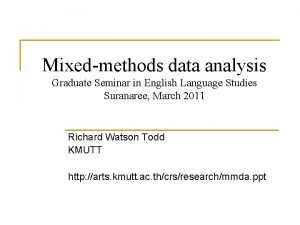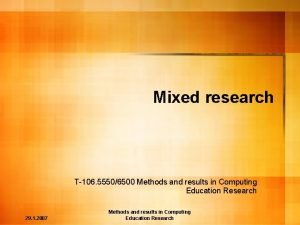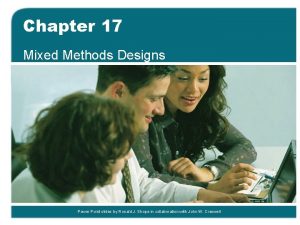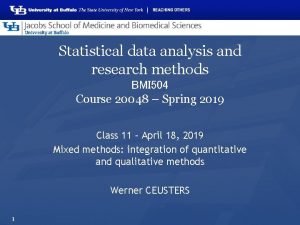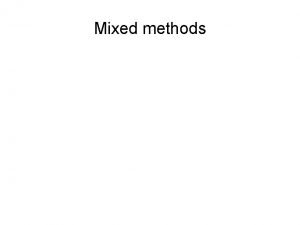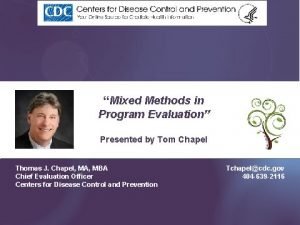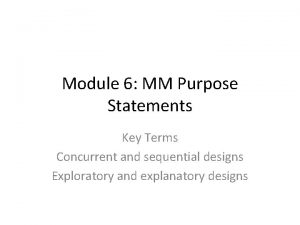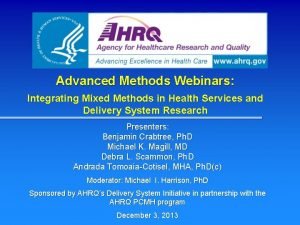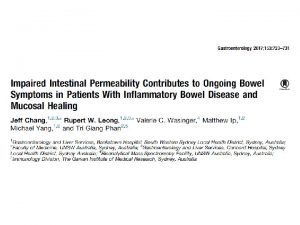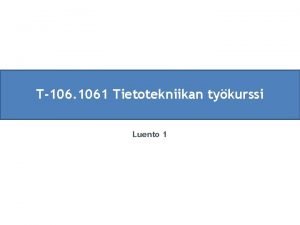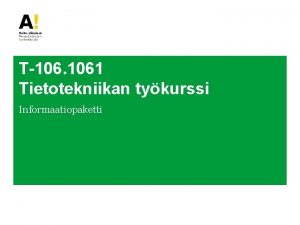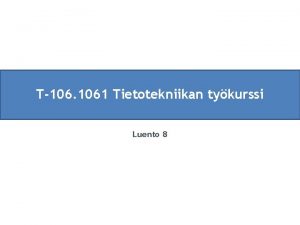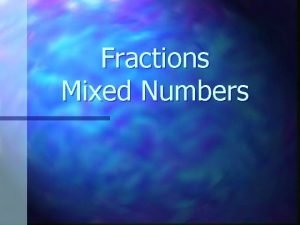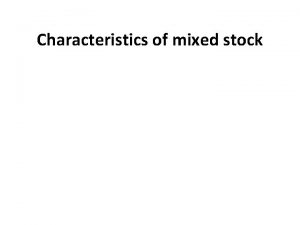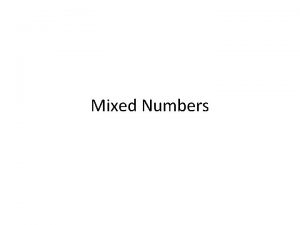Mixed research T106 55506500 Methods and results in









- Slides: 9

Mixed research T-106. 5550/6500 Methods and results in Computing Education Research 29. 1. 2007 Methods and results in Computing Education Research

Mixed methods research in educational research l The purpose of the study: l l l l l predict add to the knowledge base have e. g. social or institutional impact Measure change Understand phenomena Test new ideas. . . Research question Research method – 29. 1. 2007 which methods might work i. e answer your question Methods and results in Computing Education Research

Different kinds of procedures Model 1 QUALITATIVE Model 2 QUALITATIVE QUANTITATIVE RESULTS QUANTITATIVE Model 3 QUANTITATIVE RESULTS QUALITATIVE Model 4 29. 1. 2007 QUALITATIVE RESULTS Methods and results in Computing Education Research QUANTITATIVE

More about mixed methods: Tashakkori, A. and Teddlie, C. (Eds. ). 2003. Handbook of mixed methods in social and behavioral research. Thousand Oaks, CA: Sage. 29. 1. 2007 Methods and results in Computing Education Research

Two examples of mixed research Meisalo, V. , Sutinen, E. & Torvinen, S. : Choosing Appropriate Methods for Evaluating And Improving the Learning Process in Distance Programming Courses The 33 rd ASEE/IEEE Frontiers in Education Conference, FIE 2003, November 5 -8, 2003, Boulder, CO, USA. Setting: High school students study first-year university level studies in CS over the web. There are some problems at the course and some student drop out. Aim of the study: Ascertain the difficulties in learning programming in a virtual learning setting. Evaluate the study process in the course and improve the course 29. 1. 2007 Methods and results in Computing Education Research

Methods that were used: l Quantitative: Statistical analysis of submitted exercise – Exam scores – Analysis of closed questions in questionnaires – l Qualitative: – – – 29. 1. 2007 Analysis of open questions in questionnaires Interviews, observations, tape recordings and field notes Analysis of the feedback given by students and tutor teachers Written products: quality of submitted exercises Result of examinations Methods and results in Computing Education Research

QUANTITATIVE Results QUALITATIVE Meisalo et al conclude that qualitative methods were essential when it came to explain the quantitative findings: – 29. 1. 2007 data collected by questionnaires posed new questions that required qualitative methods Methods and results in Computing Education Research

Example 2 P. Kinnunen, L. Malmi, Problems in Problem-Based Learning - Experiences, Analysis and Lessons Learned on an Introductory Programming Course. Informatics in Education, vol 4 no 2, 2005, pp. 193 -214. Setting: University students study programming (CS 1) in tutorless PBL group. Some groups work well and gain good result and others have difficulties. Aim of the study: To find out what makes some groups work well and other not. What could be done to help all groups to work efficiently. 29. 1. 2007 Methods and results in Computing Education Research

Questionnaires 29. 1. 2007 Interpretation Methods and results in Computing Education Research Grades
 Examples of mixed methods research
Examples of mixed methods research Mixed methods research examples
Mixed methods research examples Mixed methods research ppt
Mixed methods research ppt Convergent parallel mixed methods
Convergent parallel mixed methods Mixed methods forskning
Mixed methods forskning Mixed methods program evaluation
Mixed methods program evaluation Mixed methods purpose statement examples
Mixed methods purpose statement examples Convergent design mixed methods
Convergent design mixed methods Metode penelitian kombinasi (mixed methods)
Metode penelitian kombinasi (mixed methods) Conclusion
Conclusion
